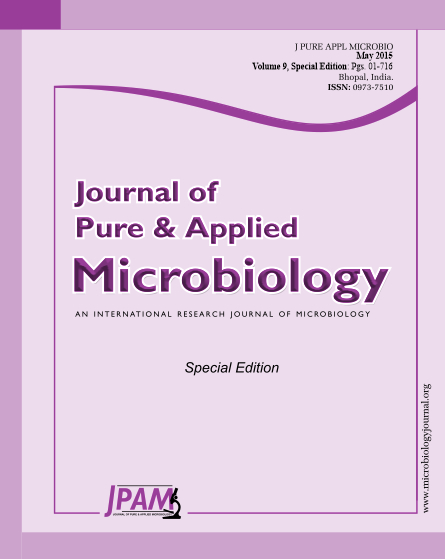The extraction of intracellular lipase with Sn-1,3 positional selectivity from a new strain of A. niger GZUF36 has been exploited by aqueous two-phase system (ATPS). Firstly, crude intracellular lipase solution was prepared by cell disruption. Sonication is the best method for disruption of A. niger cell. Then, extraction of the intracellular lipase from the crude enzyme solution was focused on by ATPS. The influence of key parameters such as molecular weight of polyethylene glycol (PEG), PEG 2000 concentration and (NH4)2SO4 concentration on the partitioning behavior of lipase was evaluated. The suitable aqueous two-phase system consisted of 20% PEG 2000 and 12% (NH4)2SO4 resulted in one-sided partitioning of the intracellular lipase with selectivity of 2.39, recovery of lipase 74.93% and purification factor of 3.42-folds. ATPS extraction may be used as a first step to purify the enzyme from crude enzyme solution.
Sn-1,3 position selectivity; intracellular lipase; A. niger GZUsF36; aqueous two phase system; extraction
© The Author(s) 2015. Open Access. This article is distributed under the terms of the Creative Commons Attribution 4.0 International License which permits unrestricted use, sharing, distribution, and reproduction in any medium, provided you give appropriate credit to the original author(s) and the source, provide a link to the Creative Commons license, and indicate if changes were made.


